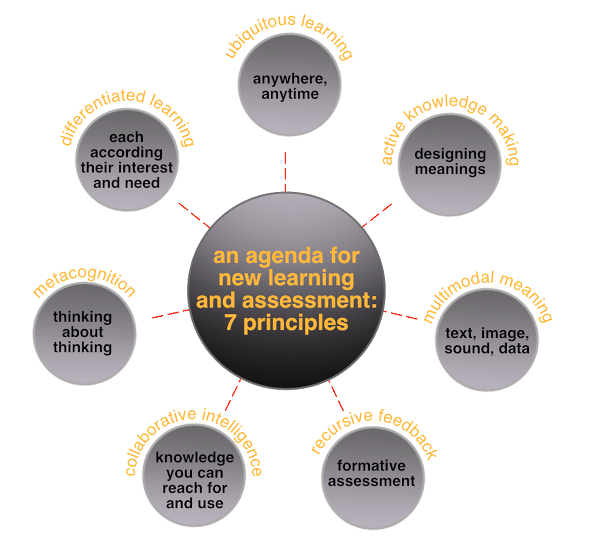The e-Affordances In eLearning
Explained by Dr. William Cope and Dr. Mary Kalantzis in their Coursera eLearning Ecology course, an e-affordance refers to whether the technology you use can enable new learning and assessment opportunities and experiences.
Here are the 7 e-affordances:
- Ubiquitous learning.
Ubiquitous learning makes it easier for learners to access content from any computer or mobile device, online or offline, anywhere and anytime. Historically, knowledge and information has been restricted by class and privilege, but creating a networked learning environment opens up access to validated knowledge and a plethora of facts.- Can your learners learn anywhere and anytime using their preferred device?
- Can they work offline (with some of the content at least)?
- Are there open resources they can go to, as well as the required resources of the course?
- Can they draw on a learning network of experts and resources?
- Active knowledge making.
Making new connections between pieces of information in order to create new meanings is part of the learning process. Learners build upon existing knowledge and/or on what they already know, so it helps if there are a variety of activities that are both process and product orientated.- Is the content learned step-by-step in a structured sequence or holistically?
- What can learners create, develop, or do with the content?
- Is it possible to make connections between key points?
- Do you provide a mix of challenging and easy tasks?
- Multimodal meaning.
Text, media, sound, and data resources are easier to create more than ever. Multimodal resources add interest and break up the style of learning. If the content is presented in multiple ways it ensures that you not only can choose your preferred medium, but also have concepts reinforced along the way.- Does the course offer multimodal resources?
- Do learners have an opportunity to create and submit assignments multi-modally?
- Are there opportunities for both print and visual learning?
- Do the resources comply with universal learning principles?
- Recursive feedback.
Recursive feedback is an important way for learners to check their progress. Receiving timely and relevant feedback has always been part of any course but now most obviously received as part of an online activity. It helps you think about what you are doing, your successes and failures, and how you can improve.- Does the learner receive feedback immediately or do they have to wait?
- Is there an opportunity for peer feedback or is it all teacher-centric?
- Is the feedback relevant and related to the task?
- Can the learner track their own progress in a meaningful way?
- Collaborative intelligence.
Whether it's to participate in a forum or to collaborate on a resource together, online social activities provide support and teamwork opportunities. Working with others in a collaboration space also stimulates more food for thought.- Does your course lend itself to a forum or an online project space? Or both?
- Do learners need to answer focus questions? Or is there an activity prompt?
- Is the collaboration activity an asynchronous or synchronous event? Can it be both?
- Is there a shared goal?
- Metacognition.
Thinking about thinking is a valuable activity for online learners. It helps you reflect on what you have learned and where you are going. It helps you determine areas of weakness as well as strengths and it helps you think about what questions to ask.- What kind of metacognition activities is available for your learners?
- Does the course lend itself to self-assessment surveys, quizzes, or learning journals?
- Is there a standard model that learners can check their work against?
- Is there an opportunity to discuss their thoughts with others?
- Differentiated learning.
Differentiated learning is also more possible now than ever before. It refers to personalizing learning experiences or tailoring a course to a learner’s needs and interests. After all, not everyone learns in the same way.- Is your course learner-centered?
- Is there a survey or assessment of individual learning needs?
- Is there relevant advice and support along the way?
- Can learners choose either a slow-paced or fast-paced option? Or one suited to their level?
It’s worth thinking about what elements you need to design and run an effective online course, so that learners don’t miss out on new ways of learning.
Originally published on June 14, 2015







